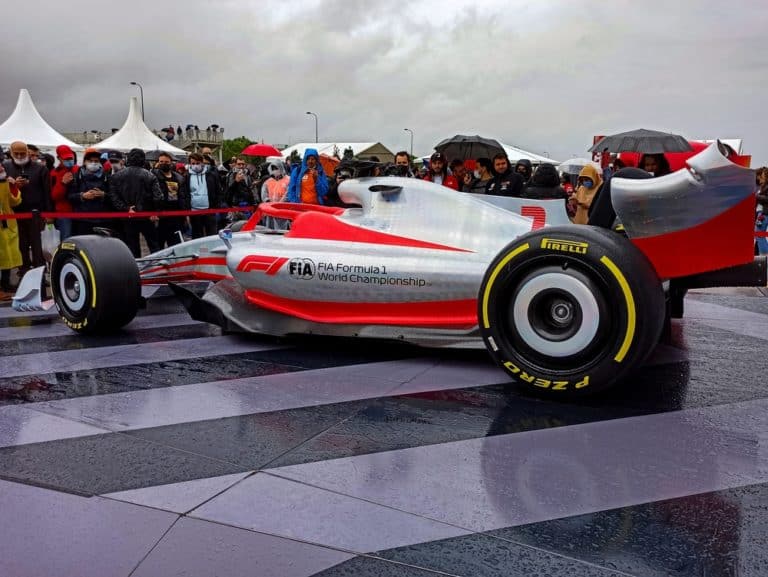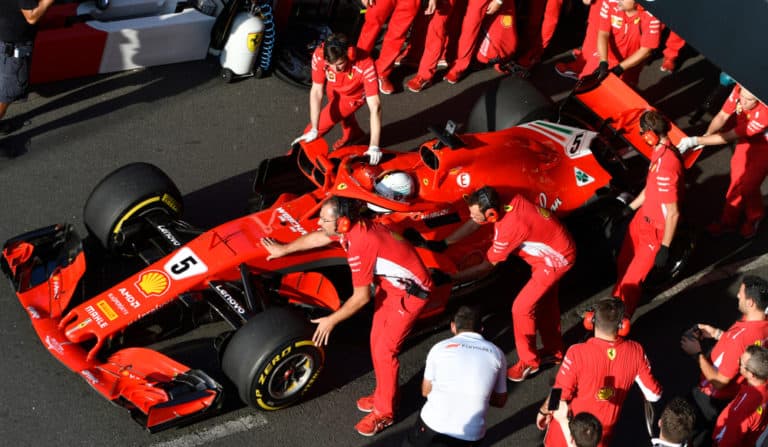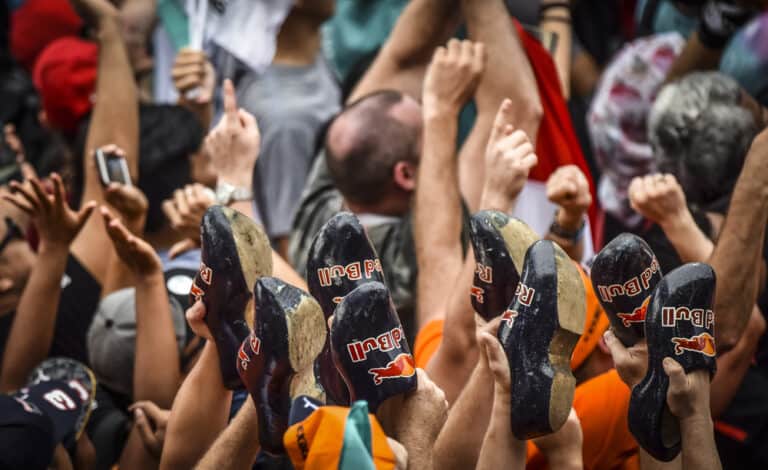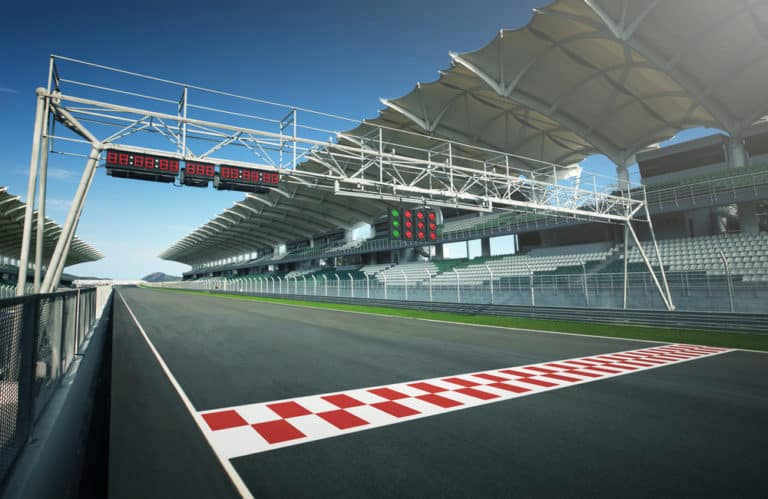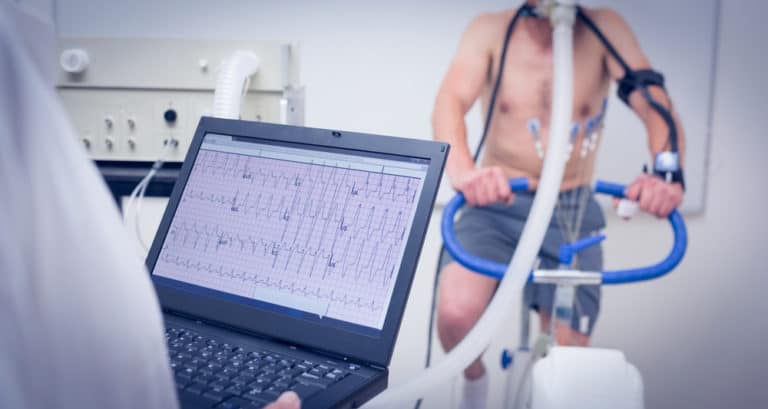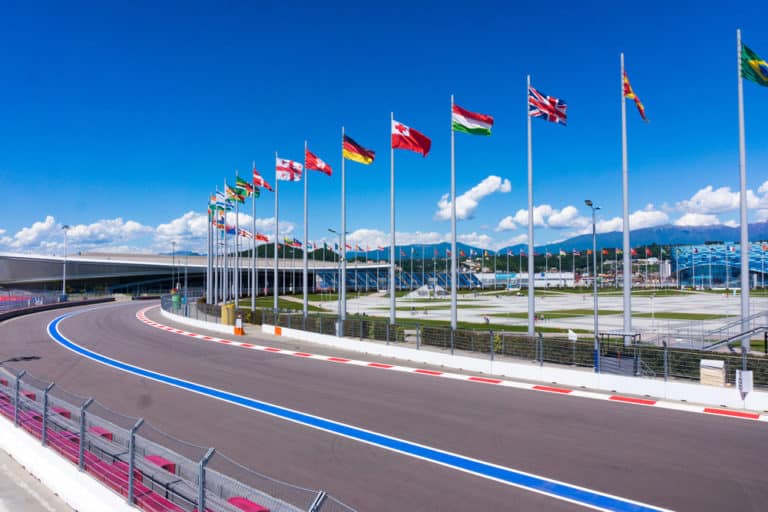F1 racing is an exhilarating sport to watch, and you may even know all there is to know about the drivers, tracks, and possible winning predictions! However, much do you know about their reasons for wearing knee pads? As a fellow F1 enthusiast, let me tell you about why F1 drivers wear knee pads!
F1 drivers wear knee pads because it protects their knee joints in the event of a crash, a bumpy road, or knocks against the car’s interior when traveling at high speeds and up to 5g’s. Knee pads can allow easier access to the car’s pedals, support when taking corners, and more comfortable seating.
Although knee pads are traditionally worn for protection, you’ll be surprised to learn that in F1 racing, they act as performance-enhancing equipment, too!
If you’re looking for some F1 merchandise, check out the awesome stuff at the official F1 store here.
Why Do F1 Drivers Wear Knee Pads?
F1 racing is not known for being a contact sport, so it may be surprising to hear that some drivers wear knee pads when racing. In truth, there are a handful of reasons why F1 racers wear knee pads; it keeps them safe when traveling at high speeds, and it also contributes to their racing performance by holding them steady.
The cockpit of an F1 car is much smaller than you would think; knee pads keep the driver’s knees and legs stable for a more comfortable seating position and a better driving experience. Due to the compact cockpit size, knee pads help protect knee joints when they bang on the sides of the interior because of bumpy roads.
Furthermore, it improves access to the pedals of the F1 car when taking corners at a few hundred miles per hour and absorbs some of the vibrations produced by the roaring engine of the F1 car. Knee pads also help to wedge the knees together, preventing them from moving about or knocking together to cause bodily harm or bruises.
It is not unheard of for F1 racers to become bruised from the knocks their body receives during a race. This is also a result of the extreme G-forces created by reaching breakneck speeds and the absence of a suspension to create stability.
Knee pads are usually at the behest or preference of the driver, although there are other forms of padding, too. There’s also protective padding on the inside of the F1 cars where the knees are (which needs to be a minimum of 25mm), but some drivers might prefer to have most of the protection directly attached to their knees rather than in the cars.
Regarding speed, since F1 drivers experience up to 5g’s acceleration, it can be detrimental to have their knees (or any part of their body) bang together or against the car.
Can F1 Drivers Become Hurt While Racing?
Racers who compete in Formula One racing drive some of the most lightweight and speedy cars, reaching speeds of almost 300 miles per hour. Are there negative consequences that drivers experience due to their high-risk profession?
F1 drivers, as it turns out, need to be in top physical form since driving these magnificent cars at such high speeds challenges their bodies to limits that exceed those of several professional sports. For this reason, a race is limited to two hours; the time restriction is carefully optimized for the safety of the drivers.
During accidents, the brunt of the force is usually taken by the tires because F1 cars do not have suspensions. The impact of accidents can severely hurt the drivers’ spines, bones, and joints. Thus, having knee pads helps absorb the impact of a crash and prevents both knees from knocking together or against the inside of the F1 car.
F1 racing puts a lot of physical strain on everyone involved, although it’s a lot more stressful for the drivers than the pit staff. G-forces, heat stress, and physical exertion are all factors that F1 drivers must contend with to win.
It is not hard to determine that a motorist is subjected to varying degrees of G force (gravity force) when driving. The lateral, longitudinal, and vertical loads of power given to the driver are the consequence of the aerodynamic force created by driving a lightweight automobile at high speeds, combined with an effective braking system.
What Other Equipment Do F1 Drivers Use?
It’s no secret that F1 racing carries an element of danger with it. For this reason, drivers utilize specific equipment to ensure they can walk away after a crash and keep their life.
- Each driver’s helmet is custom-made for them and is designed to remain on firmly in the case of an accident and keep fire or other debris from entering the helmet during the races.
- A hole in the helmet’s mouthpiece for a specific tube lets the driver sip fluids while racing.
- To protect their hearing from the thunderous noise of Formula One engines, drivers wear special earplugs (which is more than a jet taking off).
- Drivers also wear fireproof balaclavas to protect their heads in the case of a fire.
- The helmet’s visor must be as sturdy as the rest of the helmet, but it must also give good sight to the driver.
- To keep the light out of their eyes, some drivers use tinted visors, while all of them include tear-off strips that allow the driver to remove a layer if it is covered with oil or dirt. When racing at 200 miles per hour, drivers cannot risk smudges on their visors.
Safety is a top priority regarding F1 racing; many layers of security are implemented to keep the drivers safe. Additionally, the death of a driver may affect the company’s reputation.

Conclusion
F1 drivers are free to choose whether or not to use knee pads. Regardless, they will have protection via their racing suits and soft foam inside the F1 car. As a result, knee pads’ primary function is to support the knees by absorbing impact, vibration, and shock.
Sources
- https://www.quora.com/Why-do-some-F1-drivers-wear-knee-pads#:~:text=Why%20do%20some%20F1%20drivers%20wear%20knee%20pads%3F%20%2D%20Quora&text=Their%20knees%20are%20literally%20against,which%20can%20hurt%20pretty%20bad.
- 1https://www.reddit.com/r/formula1/comments/7579d5/why_does_daniel_ricciardo_have_knee_pads/
- https://www.reddit.com/r/formula1/comments/nmbgpg/what_are_the_knee_pads_some_drivers_wear_what_do/
- 1https://www.reddit.com/r/formula1/comments/2vu1jq/what_are_some_drivers_wearing_around_their_legs/
- https://www.youtube.com/watch?v=f2Iu8PWHlCk&ab_channel=RedBullRacingHonda
- https://www.formula1.com/en/latest/article.watch-it-can-hurt-a-lot-f1-drivers-reveal-what-its-really-like-when-you.7h3LzidI5AExlt0GP4C21A.html
- https://www.youtube.com/watch?v=vYPt8KfSLqA&ab_channel=SauberMotorsport

